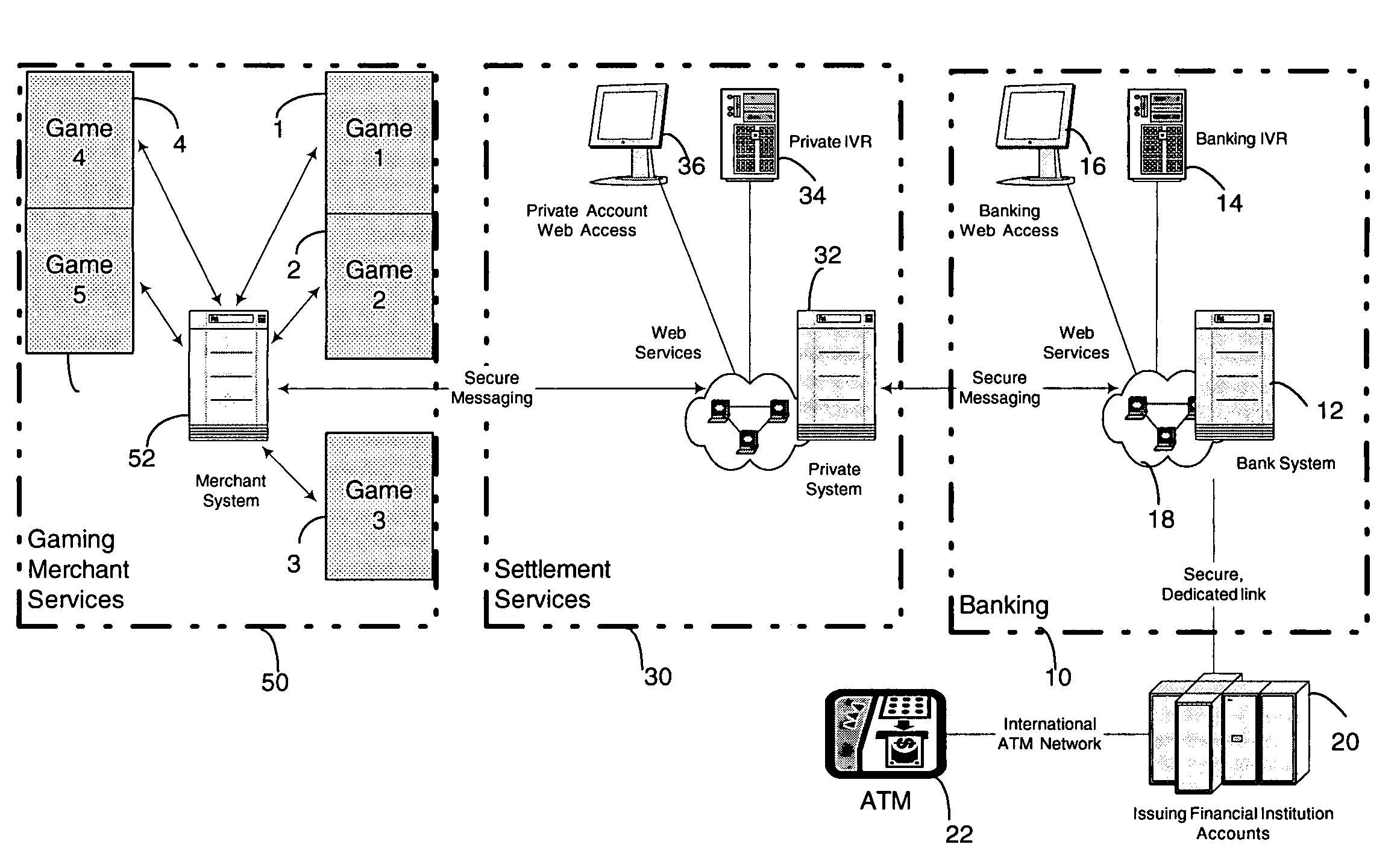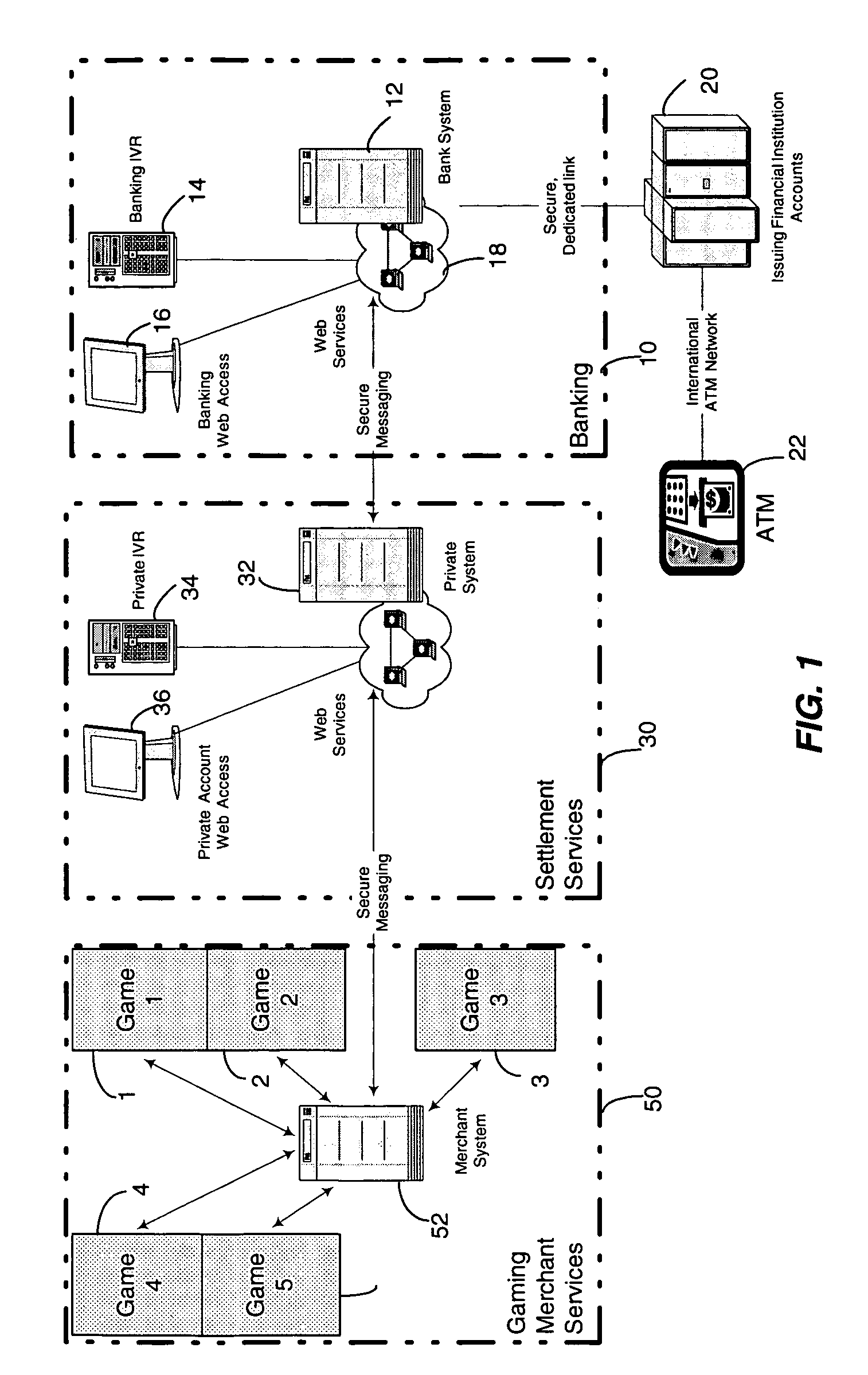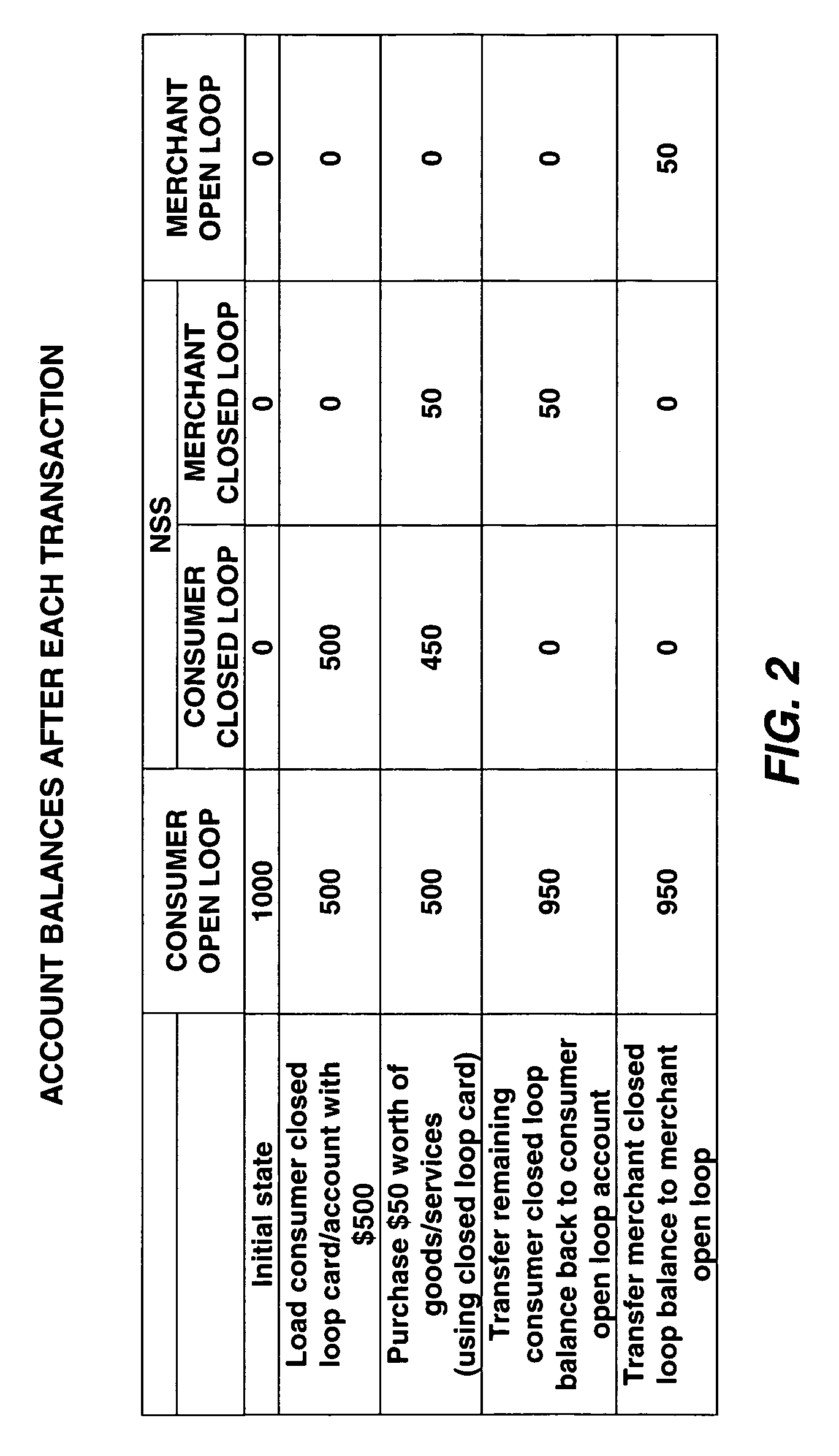Intermediary payment system and method
a payment system and intermediary technology, applied in the field of financial services industry, can solve the problems of closed-loop cards not offering the protection of open-loop cards, the store that issued the card would lose a sale, and the difficulty of getting money “in and out” with closed-loop cards, so as to achieve the effect of facilitating funds transfers quickly and easily
- Summary
- Abstract
- Description
- Claims
- Application Information
AI Technical Summary
Benefits of technology
Problems solved by technology
Method used
Image
Examples
Embodiment Construction
[0029]FIG. 1 depicts a general view of the major components of a system in accordance with an embodiment of the present invention. At a high level, there is a conventional banking system 10, network settlement services (NSS), or interface, 30 that acts as an intermediary payment system, and gaming or merchant services 50. Network settlement services (NSS) 30 acts as a go-between between banking system 10 and gaming or merchant services 50 as will be explained in more detail below.
[0030]Banking system 10 includes computer systems or means for bank card processing 12. The bank card processing means 12 operates in accordance with well-known and conventional standards. For instance, a customer can use Interactive Voice Response (IVR) 14 or online banking services 16 via network 18 to effect account management and funds transfers. Bank card processing means 12 is also in communication with issuing financial institution accounts 20 which are themselves accessible by customers via, for exa...
PUM
 Login to View More
Login to View More Abstract
Description
Claims
Application Information
 Login to View More
Login to View More - R&D
- Intellectual Property
- Life Sciences
- Materials
- Tech Scout
- Unparalleled Data Quality
- Higher Quality Content
- 60% Fewer Hallucinations
Browse by: Latest US Patents, China's latest patents, Technical Efficacy Thesaurus, Application Domain, Technology Topic, Popular Technical Reports.
© 2025 PatSnap. All rights reserved.Legal|Privacy policy|Modern Slavery Act Transparency Statement|Sitemap|About US| Contact US: help@patsnap.com



